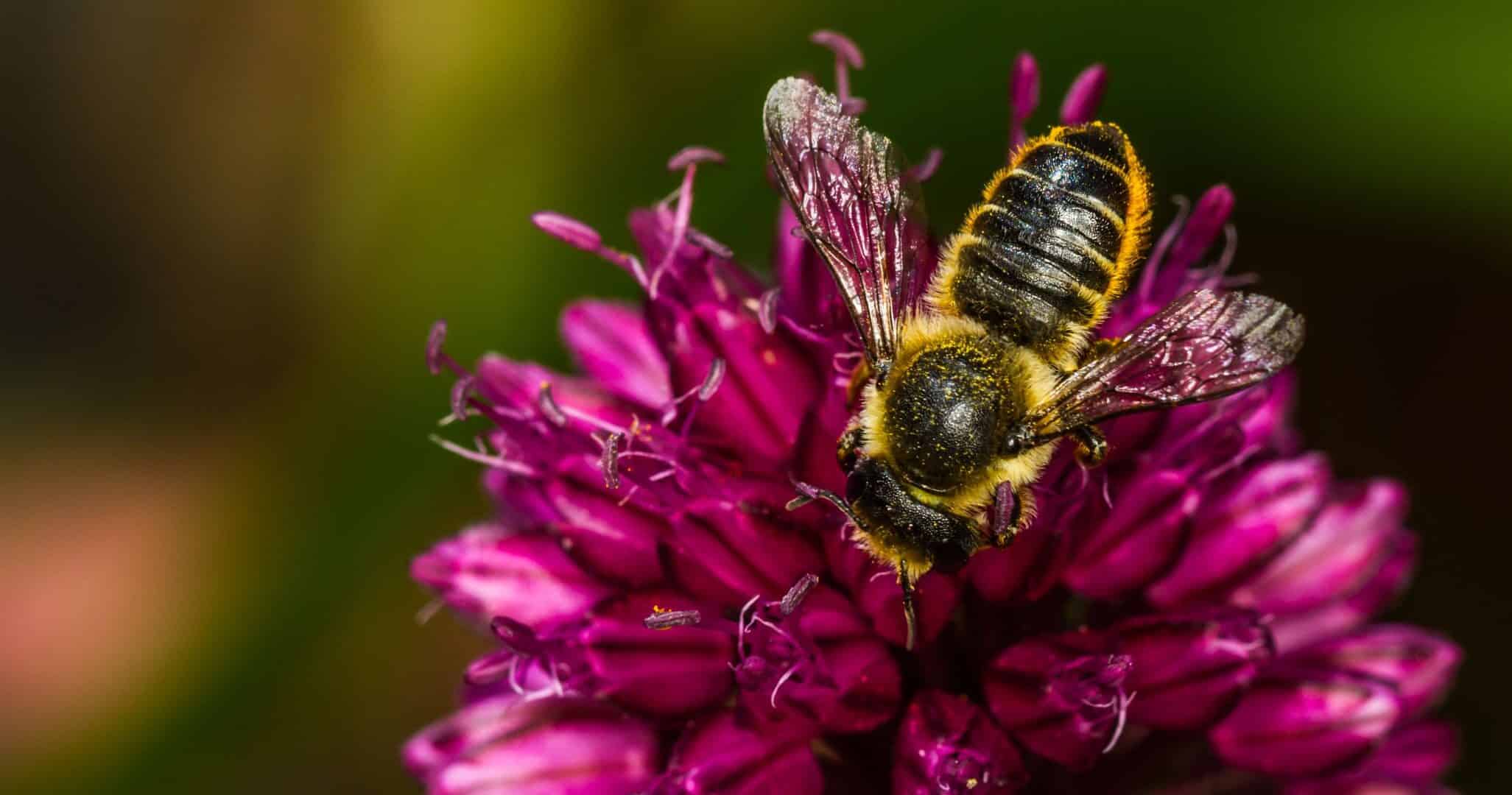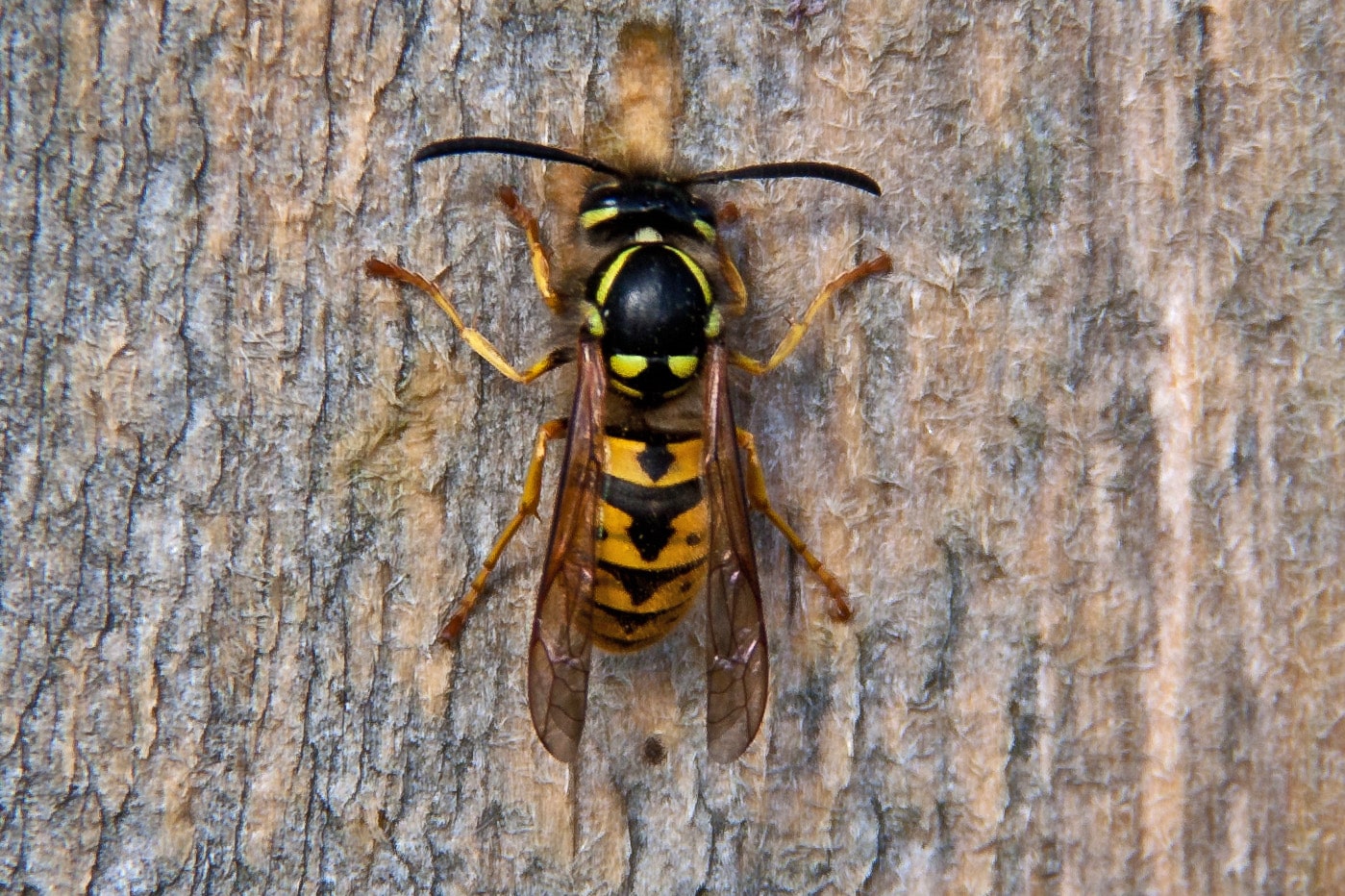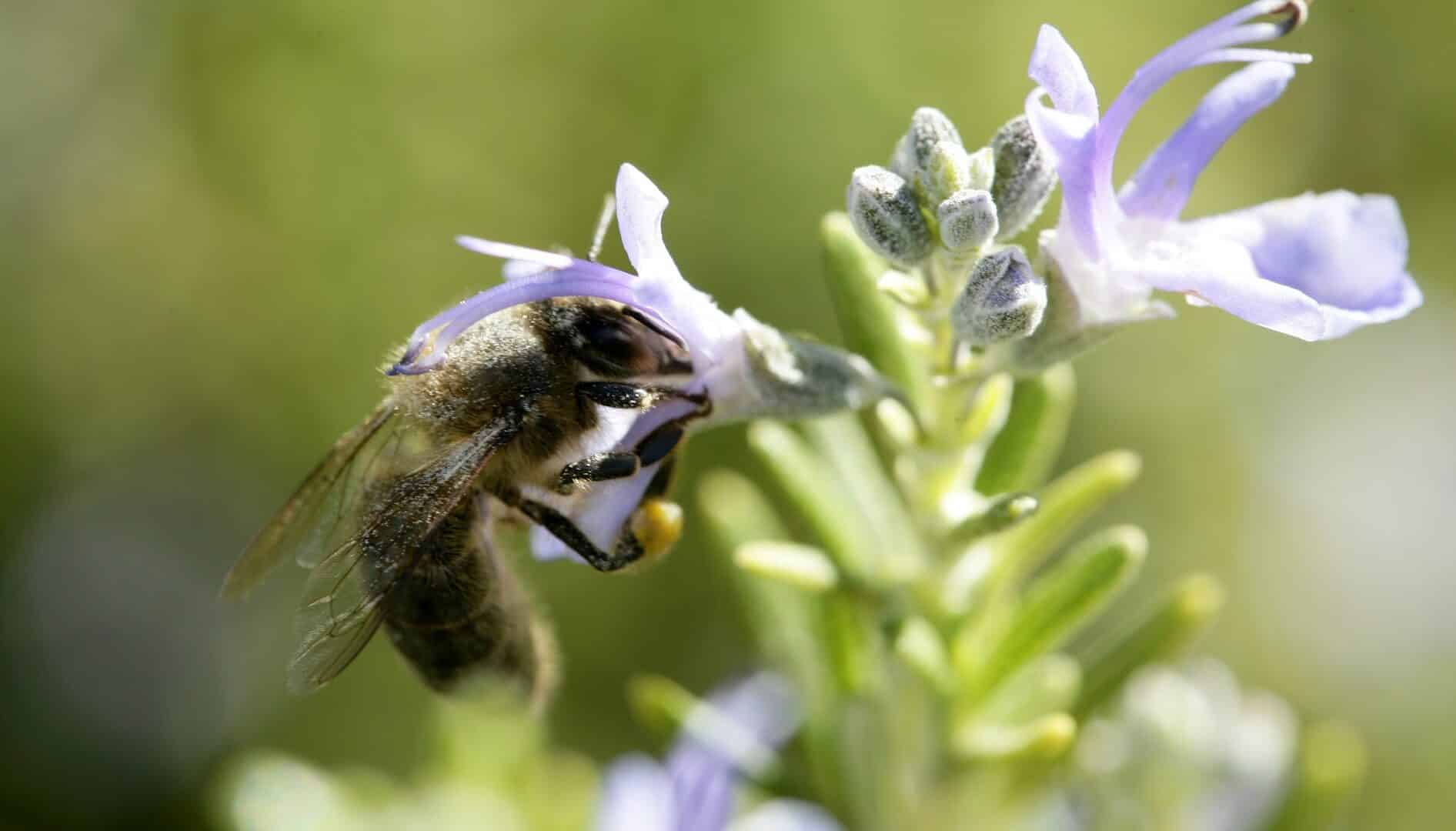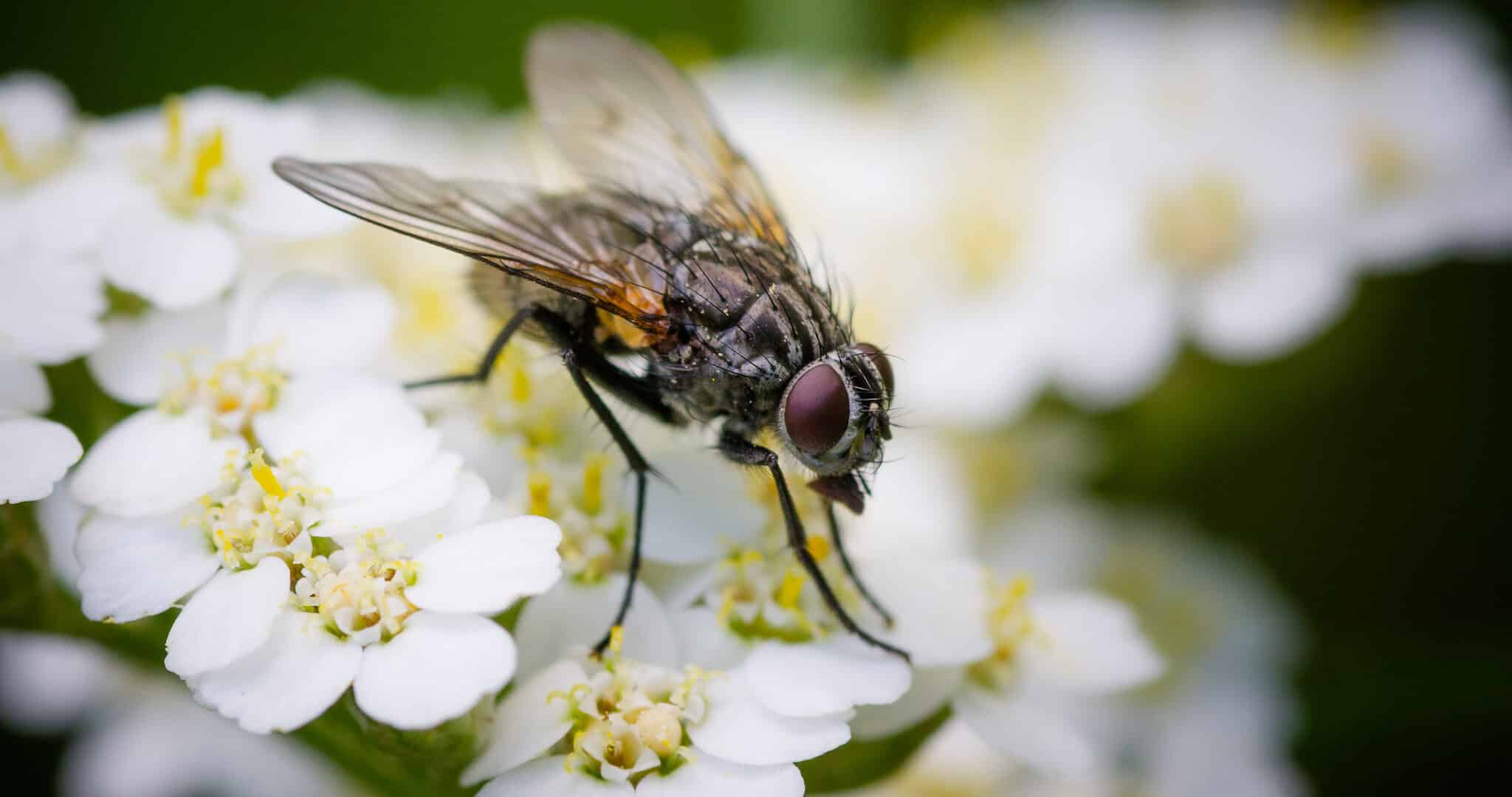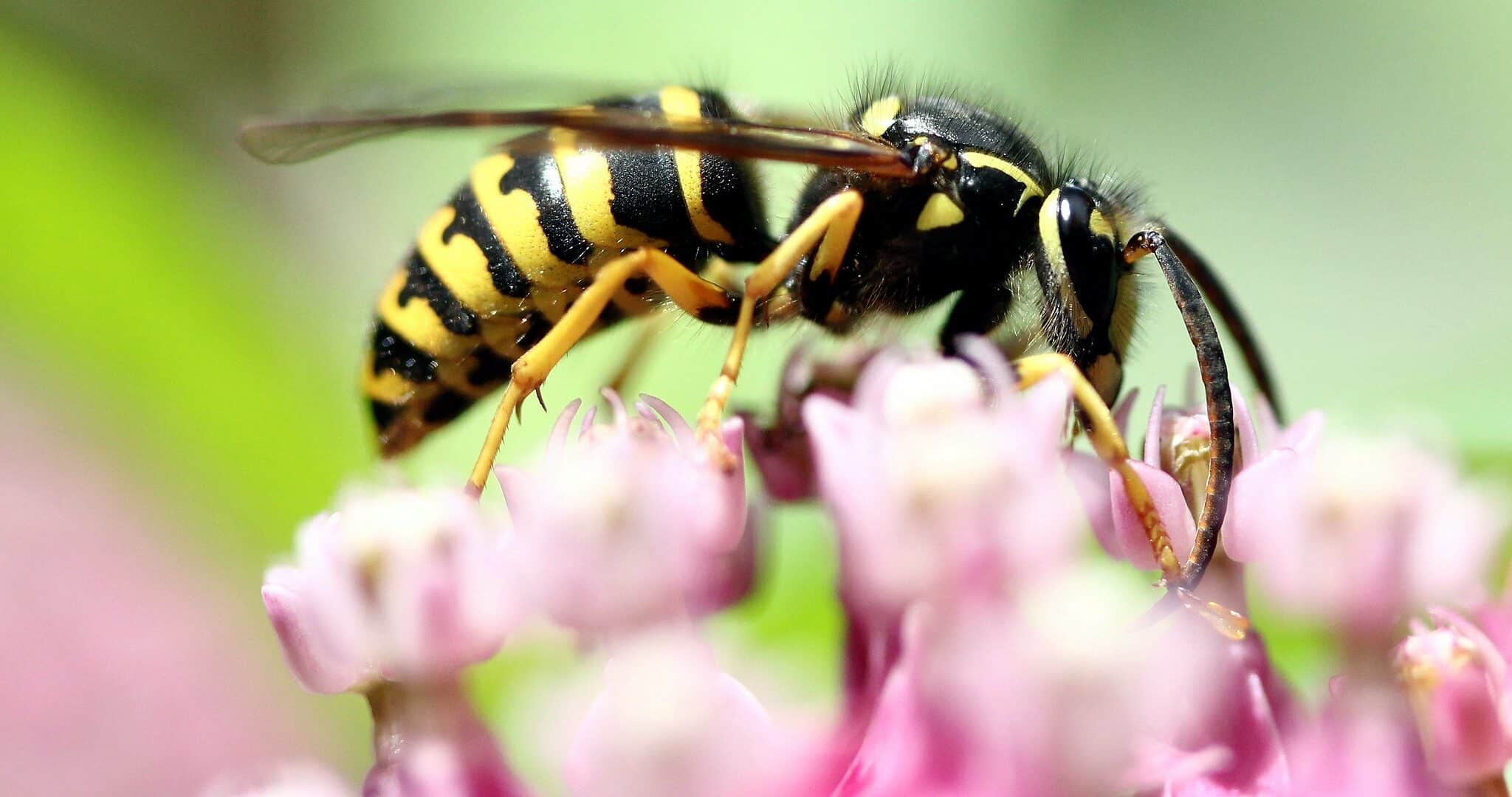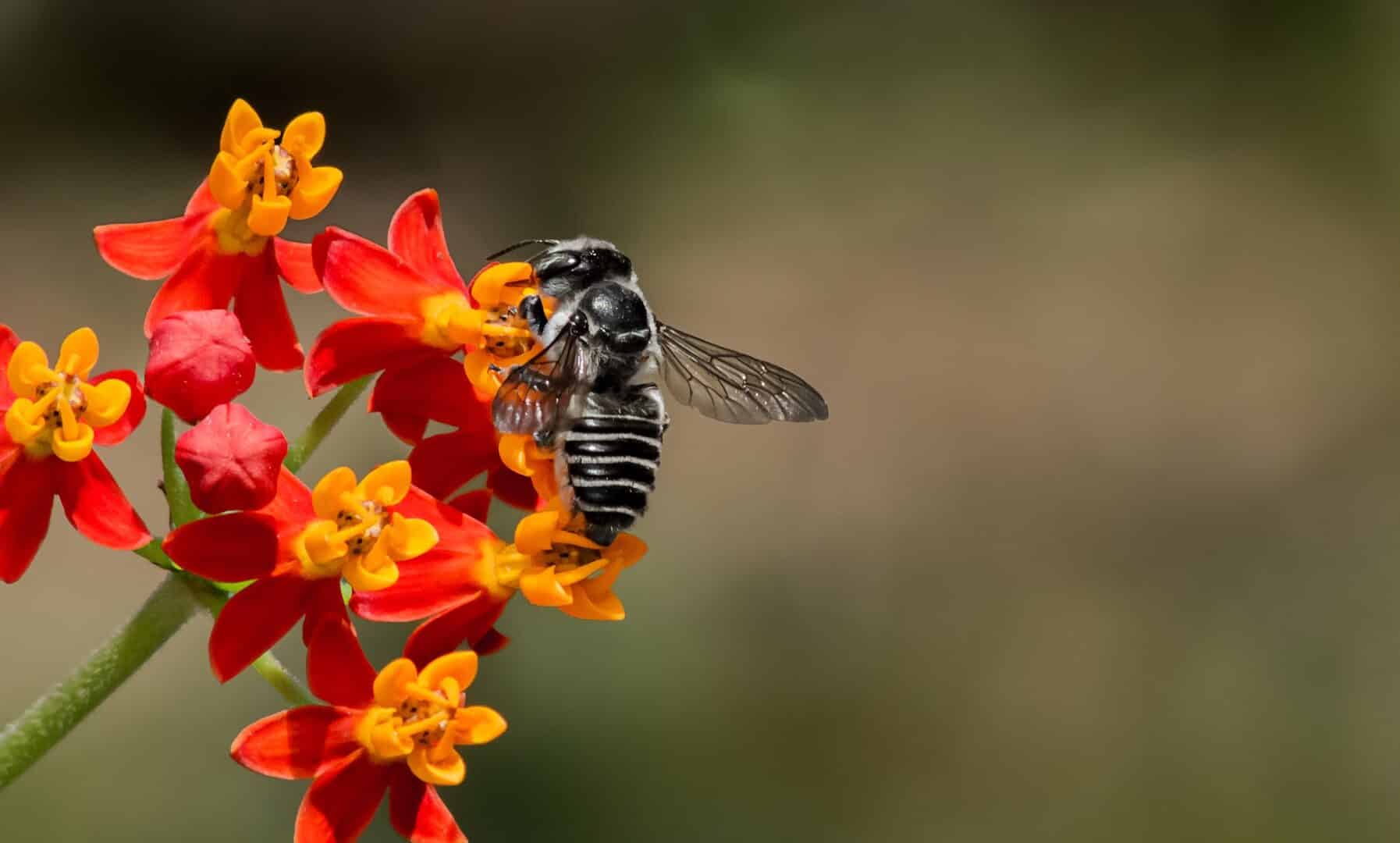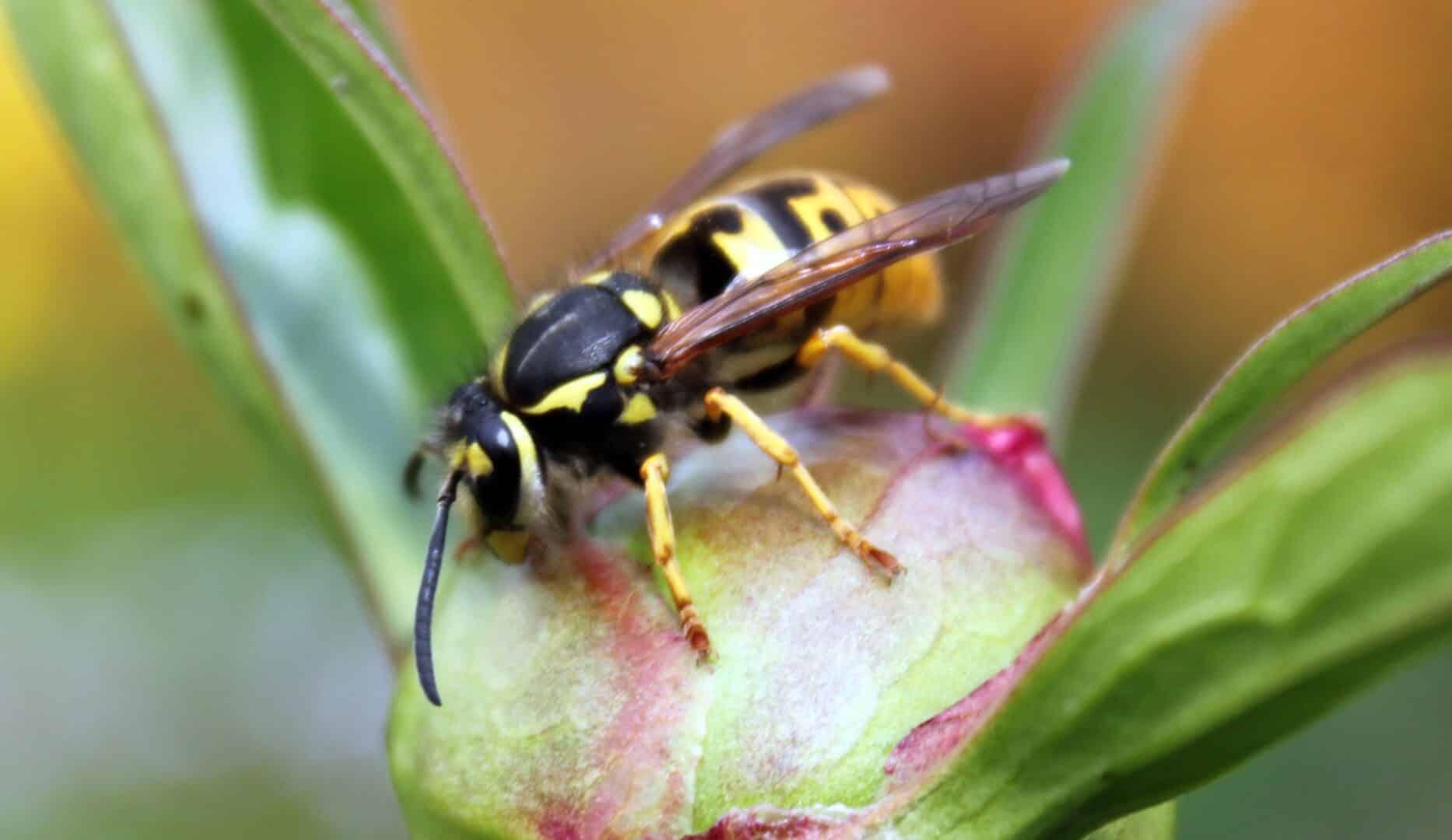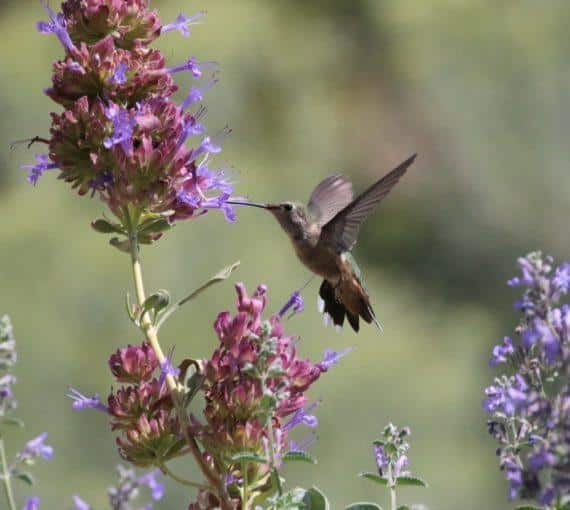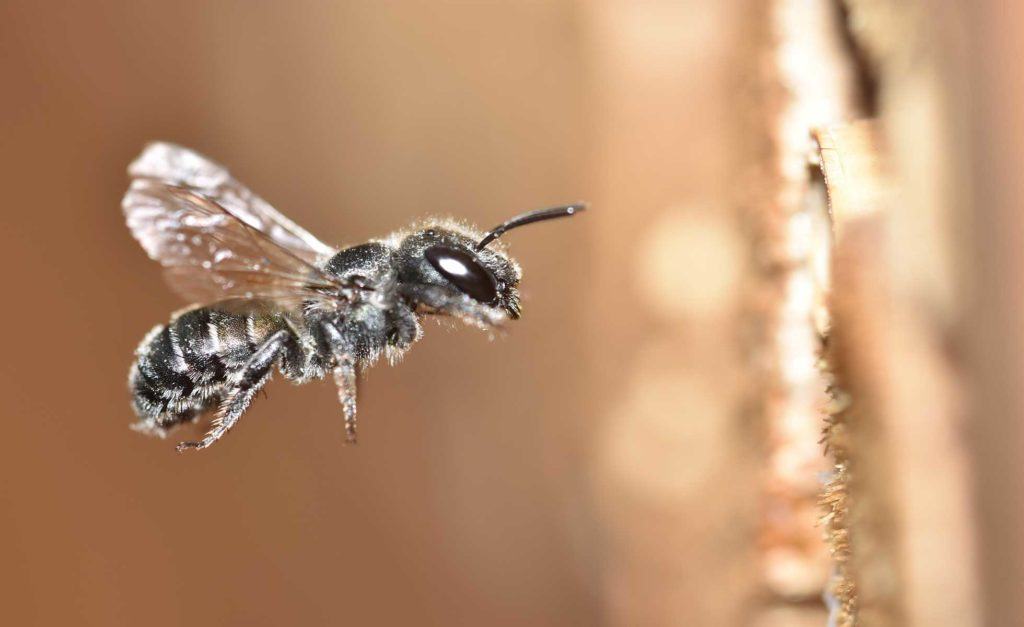
This mason bee could easily be mistaken for a fly. How can we tell them apart?
It’s important to know the difference between bees, wasps and flies.
The vast majority of insects in Canada are harmless, even beneficial. They’re often pollinators, critical in the production of many crops and essential in creating and preserving biodiversity.
But many people panic when they see insects, especially in their homes and gardens, and rush to destroy them. Learning how to distinguish bees, wasps and flies helps ensure your safety and peaceful coexistence with these important creatures. When you understand their roles and contributions, you can take steps to protect their habitats and support their populations, such as by planting a pollinator paradise, keeping an intentionally “messy” yard and using eco-friendly “pest” control methods.
THE ROLE OF BEES, WASPS AND FLIES
Pollination superstars
Bees are industrious little creatures that play an indispensable role in ecosystems.
Nature’s clean-up crew
Flies may not be as cute as bees, but they’re tireless scavengers that feed on decaying matter, help break it down and recycle nutrients back into the soil. They pollinate too!
“Pest” patrol
Wasps sometimes evoke mixed feelings due to their painful stings, but some species feed on garden “pests,” helping maintain ecosystem balance.
Three anatomical clues to identify bees, wasps and flies
If you get close enough, check for these three key physical indicators that can help you identify if it’s a bee, wasp or fly. (Pay attention: Some flies are bumblebee mimics!)
How many wings does it have?
What kind of hair does it have?
What shape is it?
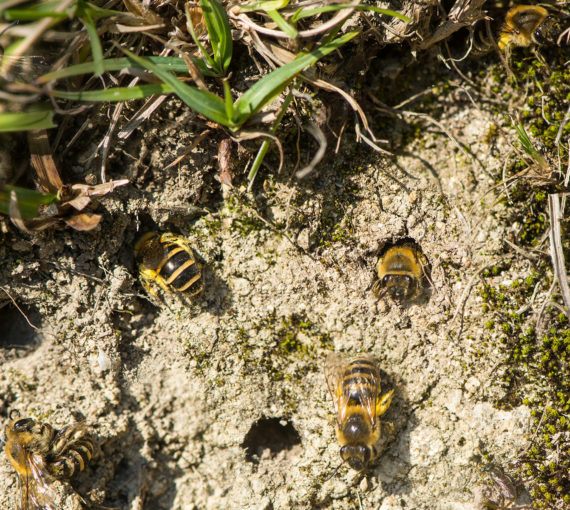
Messy yards help bees
Protecting pollinators means not using harmful pesticides and providing welcoming habitat. Even a small pollinator garden will bring in many species, especially native bees. It’s easier than you think!
The not so sweet truth about honeybees
Honeybees have become synonymous with prosperity, sustainability and environmentalism to many. This understanding has contributed to the rise of hobby and urban beekeeping. Although important to agriculture, honeybees can destabilize ecosystems by competing with and transmitting pathogens to wild native bees — including some at-risk species.
A 2023 Concordia University study revealed a negative relationship between urban beekeeping, pollen availability and wild bee species richness. Why? Non-native honeybees are dominant competitors with native bees. Honeybees came to North America from Europe during colonization as a source of wax and sugar. They’re non-native species that, unlike native bees, don’t survive in the wild here.
Native bees play a vital role in maintaining biodiversity, sustaining food production and promoting healthy ecosystems. There are 800 species of native bees in Canada that have co-evolved with native plants over millions of years. Let’s protect them.

Create a wild bee sanctuary
Wild bees need help. Many populations are declining due to habitat loss, disease and pesticide poisoning.
HOW TO TELL EIGHT DIFFERENT BEE SPECIES APART
Honeybee
Honeybees have amber and black striped abdomens (versus yellow) and long, narrow bodies. They have pollen sacs on their thighs and “hairy” eyes.
Bumblebee
Bumblebees have striped abdomens and large, fuzzy bodies. They have pollen sacs on their thighs and are cute — males even have moustaches! They live in small underground nests.
Hairy belly bee
Hairy belly bees have dark-coloured abdomens and thoraxes and round bodies. They carry pollen under their bellies (e.g., blue orchard mason bees, leaf cutter bees and resin bees).
Mining bee
Mining bees have dark abdomens and thoraxes and range a lot in size. They carry pollen up their entire legs, not just their thighs. (They wear pollen pants!)
Photo: Friends of Malheur National Wildlife Refuge via Flickr
Sweat bee
Most sweat bees are dull to metallic black in colour. Some are metallic green or blue with stripes. Females carry pollen on their back legs.
Carpenter bee
Carpenter bees bore holes in wood for nesting. They resemble bumblebees with their yellow colouring, but are generally larger and have smooth abdomens, while bumblebees have hairy abdomens with an additional yellow band near their end.
Cellophane bee
Cellophane bees have heart-shaped faces with big eyes that angle out and pale stripes on their abdomens. They’re fuzzy with pollen-collecting hairs on their back legs.

